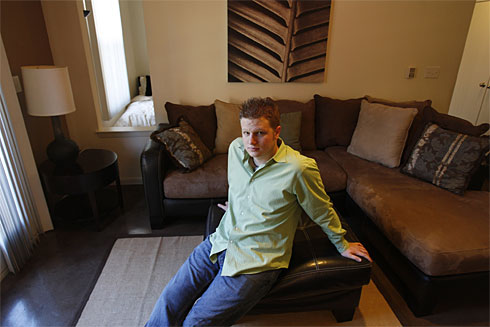
NATIONAL NEWS - When the economy shrinks, so does the size of housing, sending the popularity of tiny apartments and condos soaring as construction costs rise and financial markets plummet. Three apartments as snug as 264 square feet, half the size of a McMansion great room, are the biggest draw in Legacy Village in Plano, Texas, but they're never vacant. They rent for $418 a month, about half the price of the smallest one-bedroom units. "The big buzz is around the smaller units," says Kara Garst, a district manager for UDR, which owns and manages Legacy and multifamily real estate across the USA.
Florida-based developer Zom Companies last year downsized units in its new River Oaks apartments in Houston by 20% to an average 880 square feet. In Washington, D.C., one developer is offering a new condominium that's less than 400 square feet. Chicago's The Streeter luxury high-rise has units under 600 square feet. The micro-units are offset by large common areas chock-full of amenities from free wireless service, juice bars and cafes to high-tech health clubs, playrooms equipped with Wii game systems and rooftop terraces. One even offers a boxing ring and another "guest rooms" in the building to accommodate friends and family.
Developers are responding to a convergence of events:
• The tanking economy. The smaller the place, the cheaper the monthly rent or mortgage. That's a big draw these days.
• Eco-consciousness. Smaller units eat up less space, water and energy.
• Urban renaissance. Whether it's downtown, a gentrified city neighborhood or a suburban town center that mimics city life, urban developments are denser. Land is more valuable, making every square foot count. "People love the social interaction associated with density," says Steve Patterson, CEO of Florida-based Zom, developer of rental housing from Texas to the Mid-Atlantic.
• Millennials. The oldest of this generation of 100 million turn 26 this year. They're at the beginning of their professional lives and want to be in a more social urban environment.
"It's a huge demographic that's moving into the primary rental years," says Thomas Brink, vice president of RTKL Associates, designer of Legacy Village. "They have limited spending power. Combining that with the economic outlook suggests they'll be very value-oriented."
The trend is here to stay, says Michael Newman, president and CEO of Golub Co., an international real estate development and investment firm. Micro-units in its high-rise developments in Chicago's Streeterville neighborhood are extremely popular. "In this economy, people still want to be in cool places, and they'll trade down size for location," Newman says.
Nick Perry, a 21-year-old marketing associate, had shared a traditional apartment with a roommate in Carrollton, a large Dallas suburb. He works in Plano, so when he found a pad he could call his own at a price he could handle, he gladly moved, even though it has only 560 square feet of space. "It's the price I wanted to pay" in an area surrounded by shops and restaurants and within walking distance of his job, Perry says. "I barely drive now," he says. "I walk to work. I walk to the dry cleaner, the corner, the bar."
Developers are eager to cater to people such as Perry, 20-somethings in the budding stages of their careers who have a particular penchant for urban lifestyles. Those who grew up in modern suburban homes with stainless steel appliances, granite counters and whirlpool baths have also come to expect a touch of luxury, RTKL's Brink says. Even universities have rebuilt or redesigned dormitories in response to this generation's expectations. They want perks in neighborhoods where space is at a premium, but they don't earn much money yet. So how can developers give them what they want at a price they can afford? Provide it all in a small package.
That's a challenge. Construction costs are rising faster than incomes and the cost of building in urban areas is particularly steep. "You put all that in a box and shake it and what comes out is basically a smaller apartment," Patterson says. Designers are creating ways to give a tiny space an airy feel and still abide by codes and regulations. Some solutions: few dividing walls to make the space look larger; make walls go up only halfway; large windows; sliding doors instead of swing doors.
AvalonBay Communities, a Virginia-based owner and operator of multifamily housing nationwide, has been studying how to appeal to Gen Y for more than two years. "We're looking at what are the unique needs of first-time renters or Gen Y renters so that we can create a product," says Chris Payne, a vice president of development. "They're looking more for an urban experience, and they're looking for the best housing value they can find."
Source: USAtoday.com